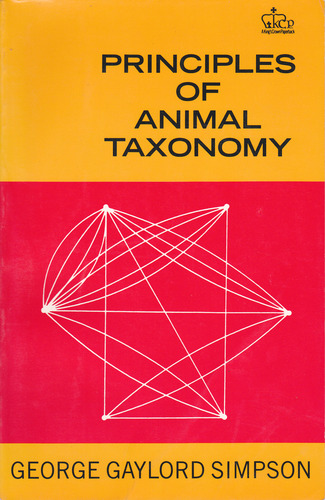Principles of animal taxonomy book download
Par robertson jordan le samedi, septembre 17 2016, 02:26 - Lien permanent
Principles of animal taxonomy. George Gaylord Simpson

Principles.of.animal.taxonomy.pdf
ISBN: 023109650X,9780231096508 | 131 pages | 4 Mb

Principles of animal taxonomy George Gaylord Simpson
Publisher: Columbia University Press
In this art there is a leeway for Principles of animal taxonomy. Simpson GG (1961) Principles of Animal Taxonomy. They then turn to taxonomy, as they study increasingly complex types of animals. Webster's Revised Dictionary (1913 Edition) [1]. From microscopic investigation to the basics of veterinary medicine, Zoology covers principles of comparative animal anatomy, physiology, and genetics. Taxonomy is a science, but its application to classification involves a great deal of human contrivance and ingenuity, in short, of art. Scarcely a decade ago, Simpson (1961) matter-of-factly concluded that for the protists "evolutionary classification is not yet practicable. This course begins with an overview of key concepts in zoology as students examine the characteristics of the animal cell and discuss heredity and issues of evolution, including natural selection. An arrangement, order + a law.] That division of the natural sciences which treats of the classification of animals and plants; the laws or principles of classification. Andrew Pawley (Aukland, 1991), 137-47; Brent Berlin, Ethnobiological Classification: Principles of Categorization of Plants and Animals in Traditional Societies (Princeton, 1992); Douglas Medin and Scott Atran, eds. The principle behind the method is illustrated in Figure 1, which shows a single species splitting into two independently evolving populations that gradually diverge over time.